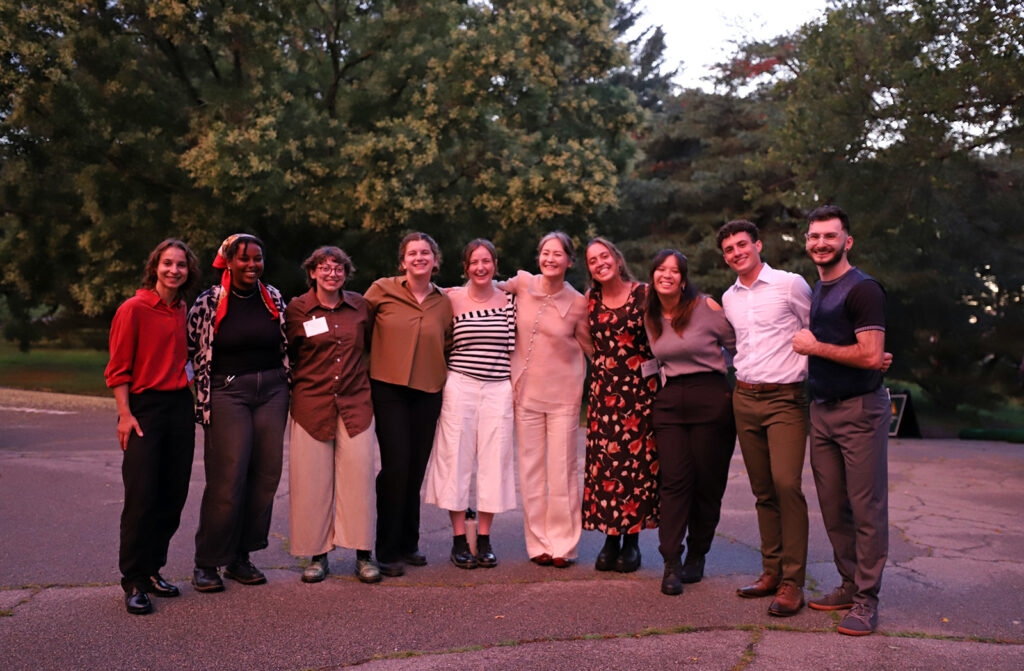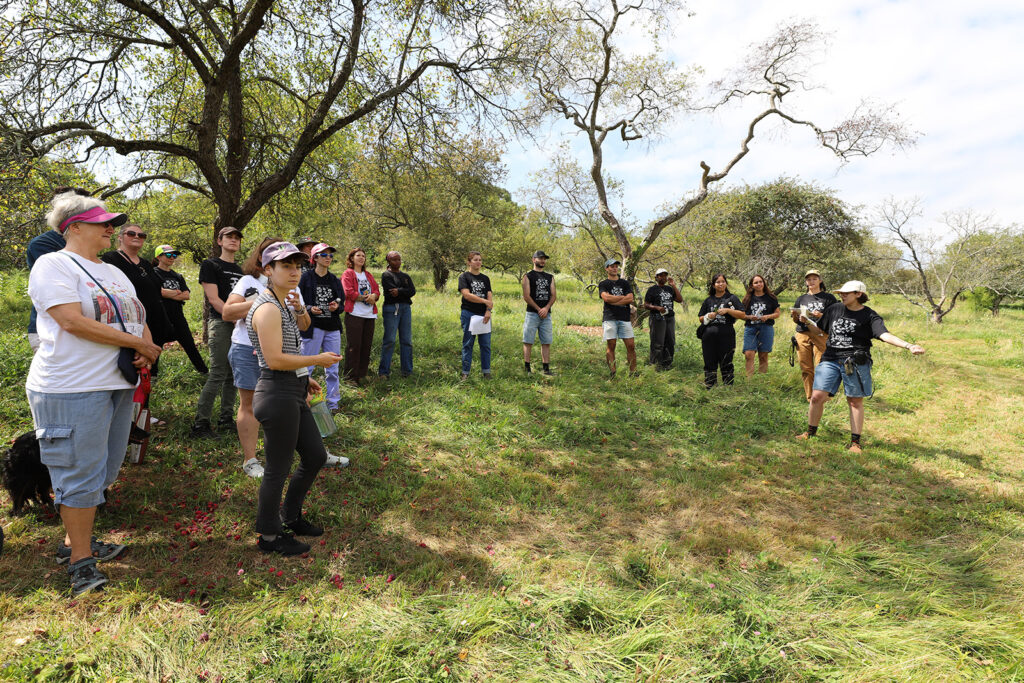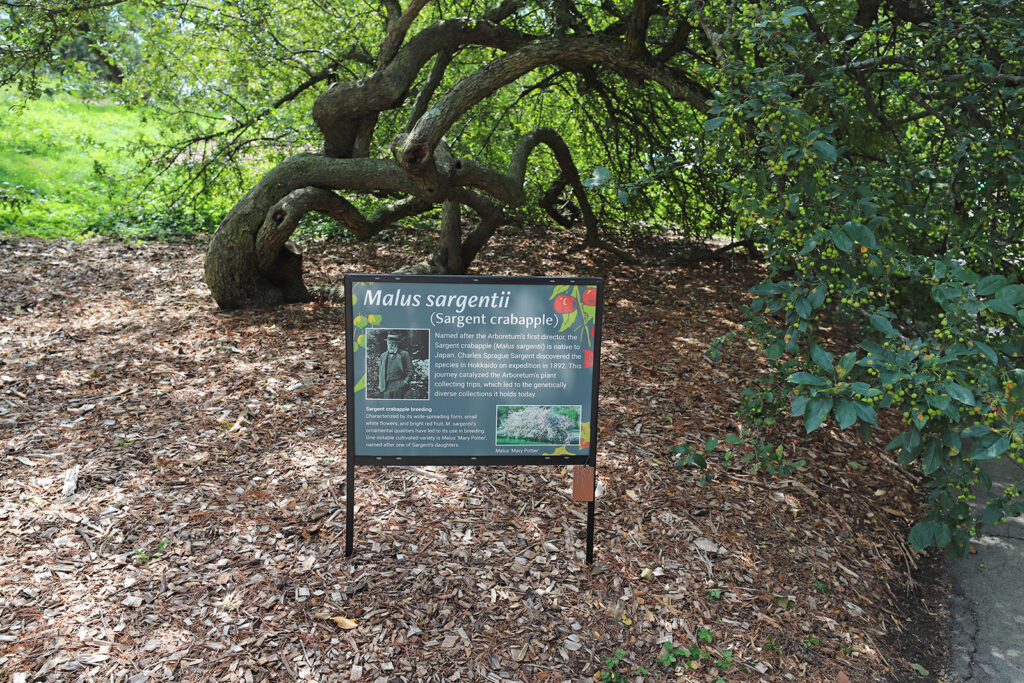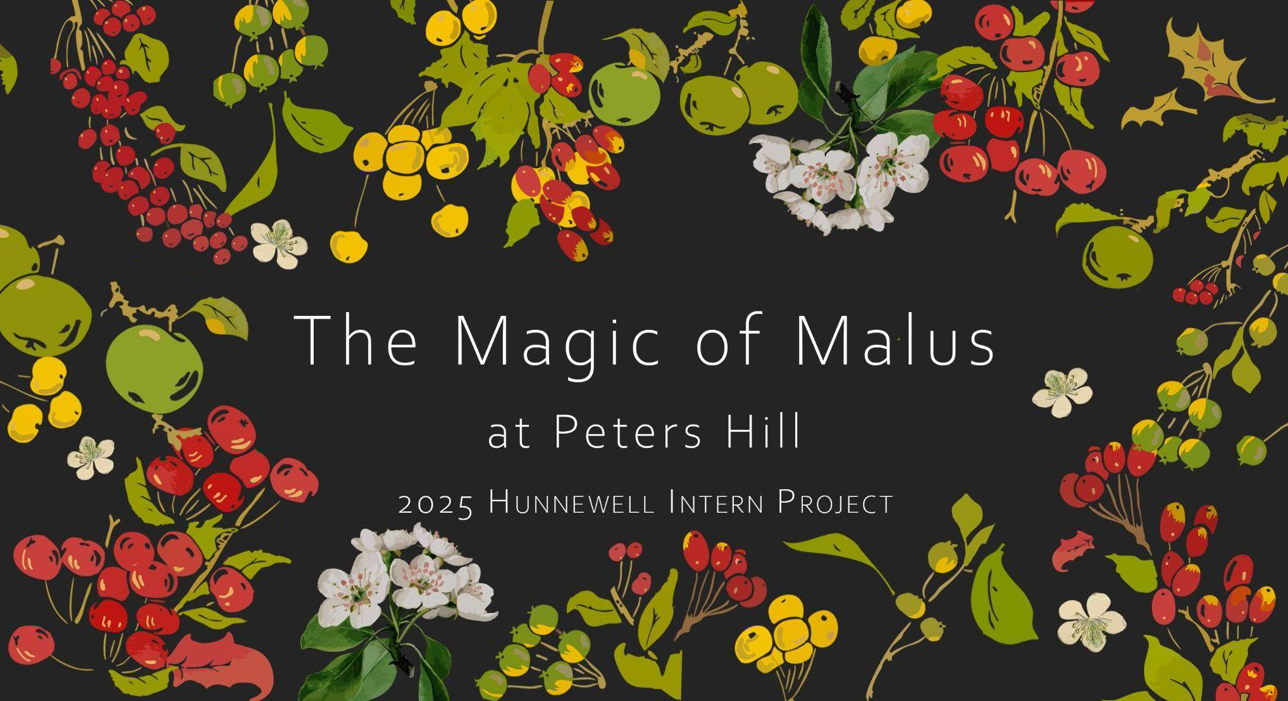2025 Hunnewell Interns Spotlight a Treasured Collection of Crabapples
Each summer, the Arnold Arboretum engages emerging green industry and public garden professionals through the Isabella Welles Hunnewell Internship Program, a vocational opportunity that merges the Arboretum’s educational and horticultural missions. Hunnewell interns spend their summer immersed in hands-on learning in our landscape, contributing to the care of our living collections while deepening their understanding of public horticulture, plant science, and landscape management. This year, as the culmination of their experience, our 2025 Hunnewell interns coordinated a project to review, manage, and interpret our historically significant collection of apple and crabapple (Malus spp.) trees on Peters Hill.

Over the course of their summer at the Arboretum, ten Hunnewell interns—each pursuing their own specialized training in either horticulture, arboriculture, propagation, or curation—contributed to researching and improving site conditions, plant care, and interpretation of apple and crabapple trees on Peters Hill. They reviewed archival materials and plant records to assess past and present management regimes, assessed the health and value of individual plants, and contributed to their stewardship by pruning and mulching. Mentored by Arboretum staff and guided by their expertise, our interns were immersed in the history of the collection, their unique cultural needs and preferences, and the challenges they face due to pests and diseases in our changing environment.
Over the course of their project, the team kept detailed records of their impressions and findings, and devised recommendations for future development and improvement of the collection. This work included preserving and repropagating germplasm of key specimens in decline due to age or disease so that their unique place in history and research will not be lost. Finally, they created new interpretive signs and deployed them across the hill to invite visitors to explore the diversity, history, and seasonal beauty of these fruit-bearing trees at the Arboretum. These highlighted accessions were also featured in a brochure developed by the interns and shared during their final presentation to staff in August.

The Malus collection at the Arboretum is one of the most visually striking and historically rich assemblages of these plants in the world. With more than 500 accessions representing dozens of species and cultivars, the collection showcases the breadth of Malus diversity—from compact, flowering ornamentals to robust fruiting trees . Many of these specimens trace their origins to historical and ongoing plant exploration and breeding programs at the Arboretum and elsewhere, offering a living archive of horticultural innovation and botanical heritage. The interns’ new interpretive signs offer insight on such topics as the role of crabapples in pollinator support, disease resistance in apple breeding, and the Arboretum’s efforts to conserve rare and unusual taxa.
The Hunnewell Internship Program has been cultivating talent and curiosity in our landscape for decades. Interns work alongside Arboretum staff in horticulture, arboriculture, curation, and plant production, gaining exposure to the complexities of managing a world-class botanical collection. Their final project, like this year’s focus on improving and interpreting the Malus collection, reflects the Arboretum’s emphasis on collaborative stewardship, public engagement and education, and the importance of connecting people and plants.

As you stroll through Peters Hill this fall, take a moment to appreciate the fruits of both nature and education in our Malus collection. Our 2025 interns’ thoughtful care and contributions provide a deeper understanding of these trees and their stories. Whether you’re a seasoned plant enthusiast or a casual visitor, we invite you to explore, learn, and be inspired by our landscape and collections—and by the next generation of horticultural stewards helping to shape our future.
Thanks to the descendants of Arboretum benefactor H. H. Hunnewell for their endowment and current-use support of the Isabella Welles Hunnewell Internship Program.
